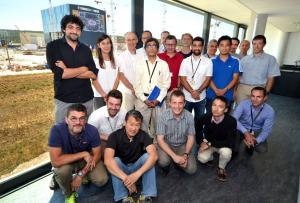A team for cryogenics
Since 2015, as part of the new Director-General's action plan for improved project performance, joint ITER Organization-Domestic Agency Project Teams have been created in schedule-critical areas to focus project resources and improve performance in delivery. These project teams, which cut across the traditional boundaries of department or agency, have helped to create a project culture that is oriented towards achieving results and stemming delays to the schedule.
Following the creation of project teams in the areas of site construction and vacuum vessel manufacturing last year, a third team has been added to the list—the Cryogenic Project Team.
The creation of the Cryogenic Project Team comes at a critical moment, as the pace of manufacturing is accelerating for cryogenic components and a new phase, installation, is beginning.



